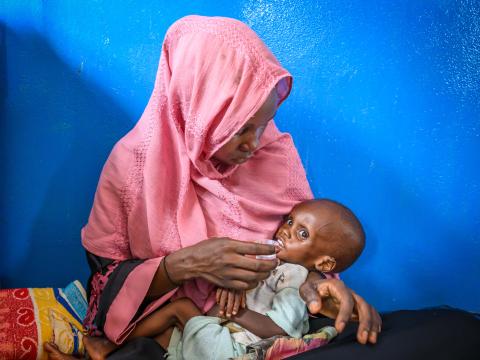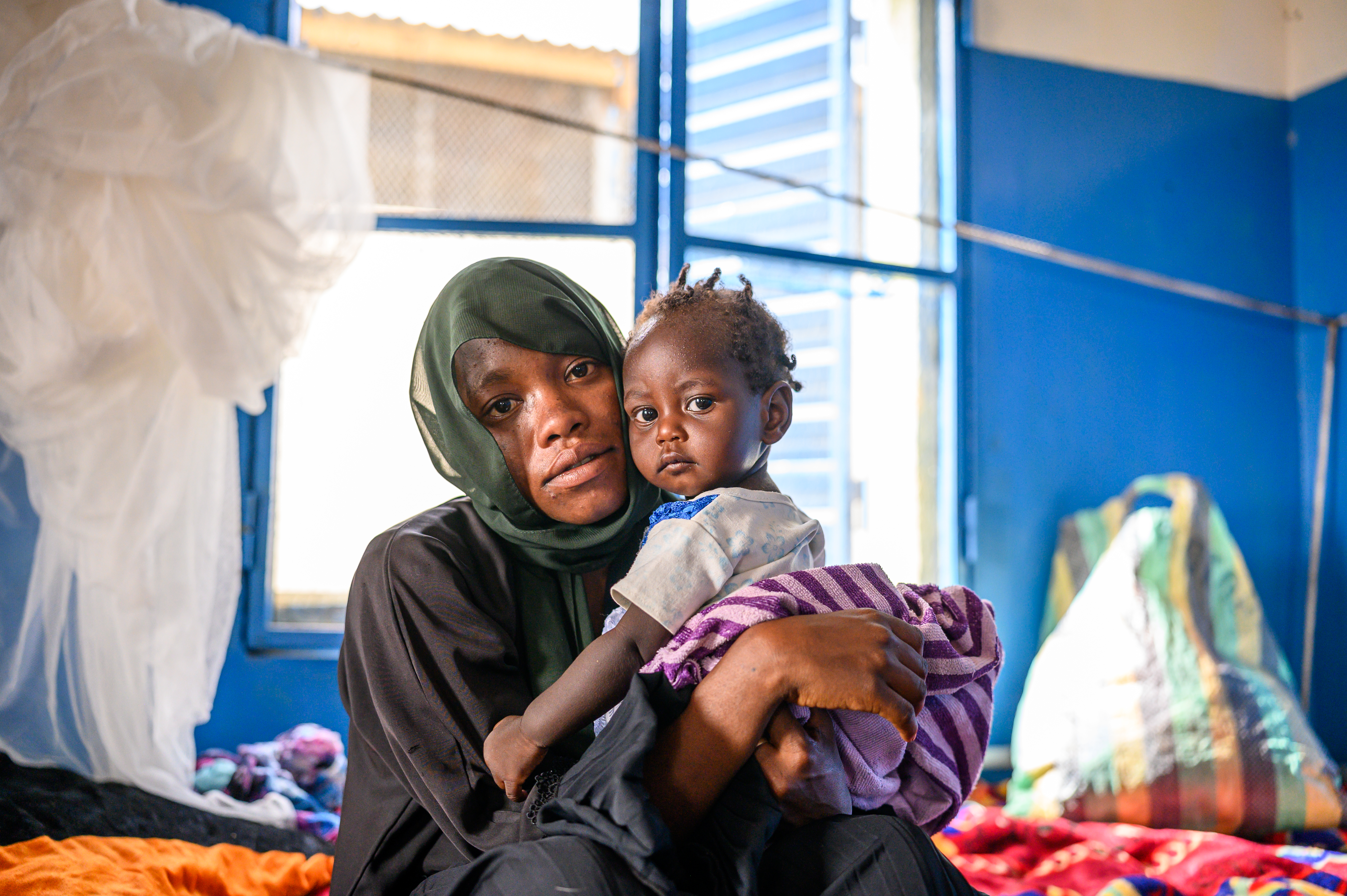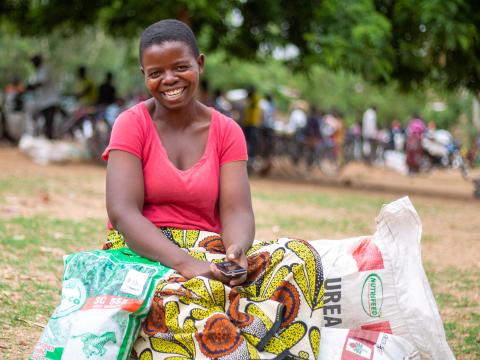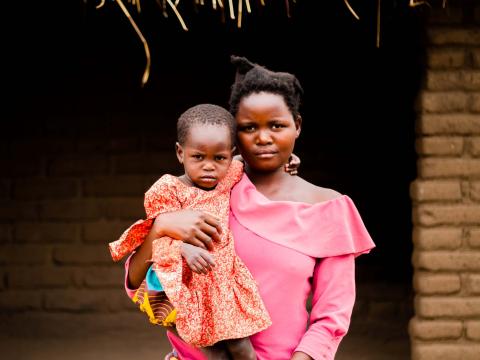
Beyond Survival: Realising the right to food in the shadow of the global aid cuts
Amanda Rives unpacks the root causes of the escalating food crisis that is further exacerbated by the aid cuts and urges international actors to renew their commitment to ending the hunger crisis
Hunger is intensifying globally as human-made crises proliferate. Even though food, protection and humanitarian assistance are universal human rights, the number of people unable to obtain sufficient nutritious food continues to grow. In 2024, across 26 nutrition crises, nearly 38 million children under five suffered from acute malnutrition, and more than 295 million people across 53 countries experienced acute food insecurity. This continues a concerning trend of steady annual increases since 2016.
The Integrated Food Insecurity Phase Classification system (IPC), the principle multistakeholder analysis guiding humanitarian decision-making around food assistance, indicates that acute food insecurity arises when the dimensions of food security – food availability, access, utilisation and stability – are disrupted. As a result, children and families face severe food shortages, high rates of malnutrition, and the widespread use of irreversible coping strategies, such as child marriage and selling income-generating assets.
As conflict, economic instability, and climate hazards devastate food systems and livelihoods, the need for humanitarian food assistance and sustainable investment in food systems is drastically increasing. At the same time, global funding cuts across the humanitarian sector are decimating the safety nets many households in crisis depend on. As of May, funding for the food security sector totalled $1.9 billion for 2025 compared to the $12.4 billion required to meet global humanitarian food security needs.
The food crises ravaging communities today are not natural phenomena but point to a collective failure on the part of the international community. Global climate negligence and diplomatic failures continue to put people in fragile contexts at risk. International legal frameworks designed to protect civilians in conflict, preserve the right to food, and ensure access to humanitarian aid are increasingly violated with impunity. At the same time, global aid cuts are creating gaps in the emergency services designed to support vulnerable communities when other systems collapse.
Every year, World Vision produces a report on the impacts of gaps in food assistance on vulnerable children and families at the frontlines of armed conflict, the climate crisis, and other humanitarian emergencies. This year, the study focused on 13 countries and features the voices of displaced people and the communities hosting them as they wrestle with the compounding implications of hunger. As the findings highlight, the impacts of rising food insecurity are devastating, wide-ranging, and exacerbated by deep cuts to available assistance.
Everyone has the right to food and humanitarian assistance
The right to food is backed by numerous legal frameworks adopted by States worldwide. The 1966 International Covenant on Economic, Social and Cultural Rights enshrined the fundamental right of every human being to be free from hunger, and the Convention on the Rights of the Child similarly states that all children everywhere have a right to adequate nutritious food.
In 2018, the UN Security Council adopted Resolution 2417, which unequivocally condemns the use of starvation as a weapon of war. In a sweeping declaration, the resolution calls on parties to armed conflict to “protect civilians and take constant care to spare civilian objects, including objects necessary for food production and distribution.” Despite the negligence evident today, International Humanitarian Law (IHL) also recognises the right of the civilian population in a State affected by armed conflict to receive humanitarian assistance and requires parties to conflict to ensure unimpeded access to humanitarian aid.
Protecting civilians, providing humanitarian assistance, and promoting food security are therefore not extraordinary altruistic gestures. They are established legal obligations fundamental to fulfilling the rights of people in crisis.
Armed conflict is the primary driver of food crises
Armed conflict and insecurity remain the primary drivers of food insecurity. In 2024, 139.8 million people in conflict zones faced high levels of acute food insecurity. Despite the protections laid out in International Humanitarian Law and Resolution 2417, famine was confirmed in Sudan in 2024 and remains imminent in other conflict-affected places such as Gaza, Haiti, Mali, and South Sudan.
Armed conflict wreaks havoc on food systems, civilian infrastructure, and the environment, destroying harvests, assets, and food reserves, disrupting supply chains, and damaging roads, homes, and community buildings. As a result, many children and families are left homeless, on the run, reeling from loss, afraid for their safety, and cut off from resources.
Host communities often face similar challenges. Contrary to common perceptions, more than 71% of refugees internationally are hosted by low- and middle-income countries. Displaced people often find refuge in communities also struggling with poverty, climate change and political instability—either in neighbouring countries or other regions of their countries of origin—and the addition of displaced households straining already stretched resources.

Ration cuts undermine people’s holistic well-being and reinforce cycles of dependency
Food assistance is designed to support the most vulnerable members of a community, who may not have other options for obtaining food due to restrictions on movement, destruction of food supplies in an area, or barriers to employment for refugees. Children and families living in refugee or IDP camps or sheltering in war zones often depend on food and cash assistance for survival in the absence of other options.
Ration cuts are therefore devastating.
World Vision’s study found that 45% of families surveyed experienced food assistance cuts prior to January 2025, and households facing cuts were 5.4 times more likely to experience food insecurity compared to households with no reductions in assistance. At the same time, the study participants emphasized that displaced people and host communities want to be self-sufficient. They want to be able to focus their attention on long-term goals beyond the daily struggle to secure their basic needs.
Ration cuts, however, exacerbate dependency. Support that was already barely enough to ensure survival is now far from the minimum level required. As a result, many families are forced to make short-term choices that could compromise the long-term well-being of their children to keep them alive.
What can we do to realize the right to food in light of these challenges?
- Invest in food security as the foundation of holistic well-being for children and families
- Ensure humanitarian action and advocacy are rights-based and grounded in existing legal frameworks and binding obligations
- Listen to what people impacted by food crises are saying and invest in building resilience and self-reliance instead of only providing support to survive
- Strengthen positive coping mechanisms: Find out what families are already doing to promote their well-being amidst scarcity and support them in doing it more effectively
- Lean on the interventions we know work: Implement evidence-based approaches, such as cash and voucher programming, school meals, financial inclusion, skill-building activities, and mental health support and move beyond emergency assistance to long-term investments aimed at resilience and self-sufficiency
- Advocate for peace, protection of civilians, and accountability for violations of International Humanitarian Law
The international community must renew our commitment to ending the hunger crisis
When international actors fail to deliver on their obligations both for protection and humanitarian aid, people at the frontlines of crises—far from diplomatic negotiations and decision-making spaces—suffer. Children, who are particularly vulnerable to malnutrition and other negative outcomes of food shortages, face the most significant risks.
As World Vision’s report highlights, having enough to eat is a critical foundation for flourishing in other areas, such as education, economic security, child protection, and mental health. Survival should not be the main goal of humanitarian food assistance but a first step in the path to resilience, self-reliance, and sustainable freedom from hunger.
The international community must renew our commitment to ending the hunger crisis. We must act with urgency and boldness to resolve the underlying drivers of hunger, protect civilians in conflict zones, build food system resilience and realise the right to food.
This is not an option. It is our duty.
Learn more by reading the Full Report and Press Release
Amanda Rives is the Senior Director, External Engagement & Resource Development for World Vision International. She oversees World Vision’s global humanitarian advocacy, working closely with UN partners, other humanitarian stakeholders, and consortia, including WFP, UNHCR, OCHA and ICVA. Her portfolio included advocacy on fragile and humanitarian contexts, the humanitarian-development-peacebuilding nexus, children on the move, and children in armed conflict.



